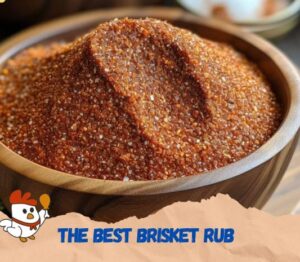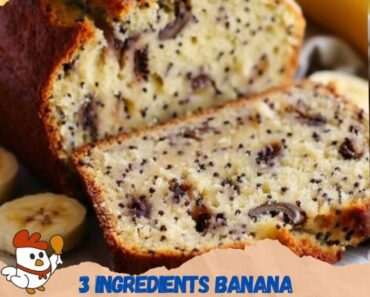
The Ultimate Brisket Rub Recipe: A Flavorful Journey
There’s something truly special about crafting the perfect brisket, and it all starts with the right rub. Imagine a sunny afternoon, the aroma of spices filling the air as you prepare for a delightful barbecue with friends and family. The brisket, tender and flavorful, becomes the star of the show. Today, I’ll share with you the best brisket rub recipe that will elevate your brisket game and make your next barbecue unforgettable.
Ingredient Overview
Crafting a perfect brisket rub requires the right balance of spices. Here’s a detailed look at the ingredients and why they are essential:
- ¼ cup coarse black pepper: The coarse texture of black pepper provides a robust, spicy flavor that penetrates the meat deeply.
- ¼ cup kosher salt: Kosher salt helps in tenderizing the meat while enhancing the natural flavors of the brisket.
- 3 tablespoons smoked paprika: Adds a smoky, sweet depth to the rub, complementing the meat’s natural taste.
- 2 tablespoons garlic powder: Imparts a savory, aromatic flavor that blends well with the other spices.
- 1 teaspoon onion powder: Adds a subtle sweetness and complexity to the rub.
Step-by-Step Cooking Instructions
Crafting the perfect brisket starts with applying the rub correctly. Let’s break down the process:
1. Mix the Spices:
Combine all the spices in a small bowl. Ensure they are well-mixed to distribute the flavors evenly. You can use the rub immediately or store it in an airtight jar for future use.
2. Prepare the Brisket:
When you’re ready to apply the rub, pat the brisket dry with paper towels. This step is crucial as it helps the rub adhere to the meat better.
3. Sprinkle the Spice Mix:
Sprinkle the spice mix evenly over the surface of the brisket. Make sure every part of the meat is covered for consistent flavor.
4. Massage the Meat:
Use your hands to massage the spices into the meat, ensuring it’s well-coated. A good rule of thumb is to use 1 to 2 tablespoons of dry rub per pound of meat.
5. Rest the Brisket:
Let the meat sit on the kitchen counter for about 30 minutes. This allows it to come to room temperature and gives the spices time to blend with the meat, enhancing the flavor.
Frequently Asked Questions
1. How long can I store the brisket rub? You can store the brisket rub in an airtight jar for up to six months.
2. Can I use this rub for other meats? Yes, this rub works well with other meats like pork and chicken.
3. Should I apply the rub right before cooking? It’s best to apply the rub at least 30 minutes before cooking to allow the flavors to meld with the meat.
4. Can I add sugar to this rub? Yes, adding brown sugar can enhance the sweetness and create a caramelized crust on the meat.
5. How do I know if I’ve used enough rub? A general rule is 1 to 2 tablespoons per pound of meat.
6. Can I make the rub spicier? Yes, you can add cayenne pepper or chili powder to increase the heat.
7. What if I don’t have smoked paprika? You can use regular paprika and add a bit of liquid smoke for the smoky flavor.
8. Is kosher salt necessary? Kosher salt is preferred due to its texture and flavor, but sea salt can be a substitute.
9. How should I store leftover brisket? Store it in an airtight container in the fridge for up to four days.
10. Can I freeze the brisket rub? While not necessary, you can freeze it to extend its shelf life.
11. Does the brisket rub need oil? No, the meat’s natural juices help the rub adhere during cooking.
12. Can I use fresh garlic and onion instead of powders? Fresh ingredients can alter the texture of the rub, but they can be used if finely minced.
13. How long should I let the brisket rest after cooking? Let it rest for at least 30 minutes to allow the juices to redistribute.
14. Should I marinate the brisket along with the rub? The rub alone is sufficient, but marinating can add more depth to the flavor.
15. Can I smoke the brisket with this rub? Yes, this rub is perfect for smoking brisket.
16. What wood chips pair well with this rub for smoking? Hickory, mesquite, or oak wood chips work well with this rub.
17. How can I achieve a crusty bark on the brisket? A higher temperature initially can help form a crust, then reduce heat to finish cooking.
18. Should I cover the brisket while it rests? Yes, loosely cover it with foil to keep it warm.
19. How do I prevent the brisket from drying out? Cooking at a low and slow temperature helps retain moisture.
20. Can I use this rub for grilled brisket? Yes, this rub is versatile and can be used for grilling as well.
20 Helpful Tips
1. Pat the brisket dry: Ensures the rub sticks better to the meat. 2. Apply rub generously: Don’t be afraid to coat the meat well. 3. Use fresh spices: Ensures the most vibrant flavor. 4. Let the brisket rest: Allows spices to penetrate the meat. 5. Store rub in a cool, dark place: Maintains its potency. 6. Experiment with flavors: Customize the rub to your taste. 7. Keep a clean workspace: Prevents cross-contamination. 8. Massage thoroughly: Ensures even distribution of spices. 9. Use a smoker if possible: Enhances flavor with a smoky touch. 10. Rest cooked brisket: Helps retain juices. 11. Use coarse spices: Provides better texture and flavor. 12. Don’t rush the process: Good brisket takes time. 13. Keep the brisket moist: Use a spritz of water or broth while cooking. 14. Monitor internal temperature: Aim for 195-205°F for tender brisket. 15. Use a meat thermometer: Ensures perfect doneness. 16. Let rub sit overnight: For deeper flavor penetration. 17. Pair with the right wood: Enhances the overall flavor. 18. Slice against the grain: For tender slices. 19. Clean your grill or smoker: Ensures consistent cooking. 20. Enjoy the process: Cooking is as much about the journey as the destination.
10 Storage Tips
- Cool brisket before storing: Prevents condensation and sogginess.
- Use airtight containers: Keeps brisket fresh.
- Refrigerate promptly: Within two hours of cooking.
- Label and date containers: Helps keep track of storage time.
- Freeze if not used within four days: Extends shelf life.
- Slice before freezing: Makes reheating easier.
- Vacuum seal for best results: Prevents freezer burn.
- Store in single layers: Ensures even cooling.
- Reheat only what you need: Prevents waste.
- Use leftover brisket creatively: In sandwiches, tacos, or salads.
20 Recipe Secrets
- Quality meat matters: Start with a good cut of brisket.
- Balance your spices: Ensure no single flavor overwhelms.
- Fresh is best: Use fresh spices for the most robust flavor.
- Rest your meat: Before and after cooking.
- Don’t skip the rub: It’s crucial for flavor.
- Low and slow cooking: Best for tender brisket.
- Spritz with broth: Keeps the meat moist.
- Monitor heat: Consistent temperature is key.
- Use a water pan: In your smoker for added moisture.
- Let it rest before slicing: Essential for juicy brisket.
- Trim excess fat: Ensures even cooking.
- Fat side up: Allows the fat to render down into the meat.
- Use a rub shaker: For even distribution.
- Experiment with different peppers: For unique flavors.
- Add a touch of sugar: For caramelization and balance.
- Pair with good sides: Complements the brisket.
- Keep a cooking journal: Note what works best.
- Use indirect heat: Prevents burning.
- Choose the right wood: For smoking.
- Enjoy the process: Make it a fun and rewarding experience.
Additional Sections
Pairing Suggestions
Pair your perfectly cooked brisket with sides like coleslaw, baked beans, or cornbread. These classic accompaniments enhance the flavors of the brisket and create a balanced meal.
Nutritional Information
For those mindful of their diet, here’s a quick look at the nutritional profile of this rub. While the rub itself is low in calories, the brisket’s nutritional value will depend on the cut and preparation method.
Reader Testimonials
Hear from fellow cooking enthusiasts who have tried this recipe and shared their experiences. Their stories can inspire you and provide additional tips for perfecting your brisket.
Conclusion
With this ultimate brisket rub recipe, you’re well on your way to creating a flavorful, tender brisket that will impress your guests and make your next barbecue a memorable one. Enjoy the process, experiment with flavors, and happy cooking!







